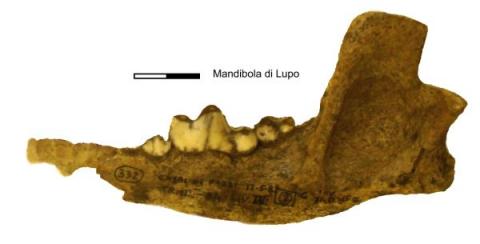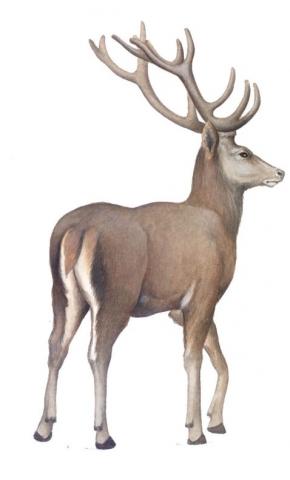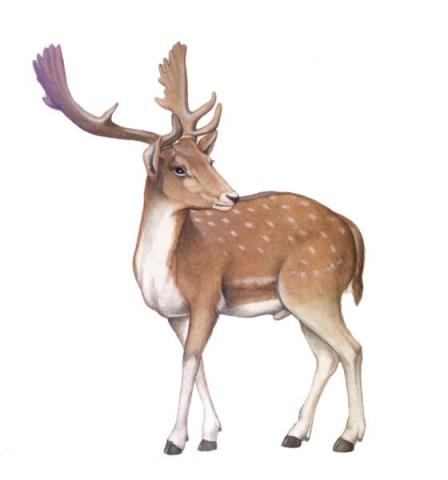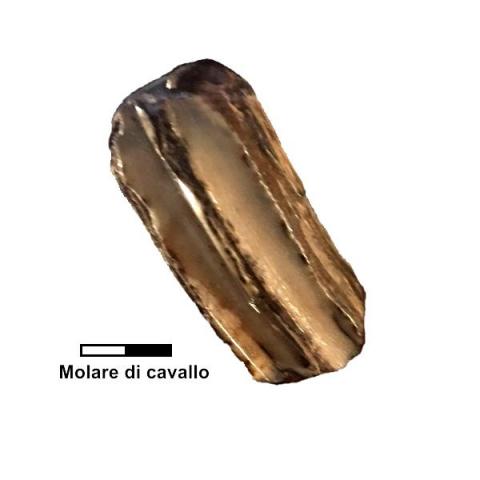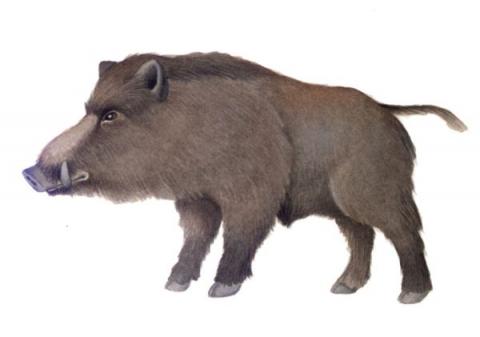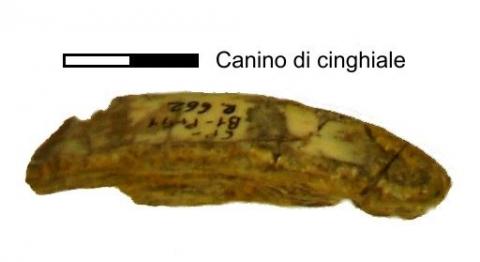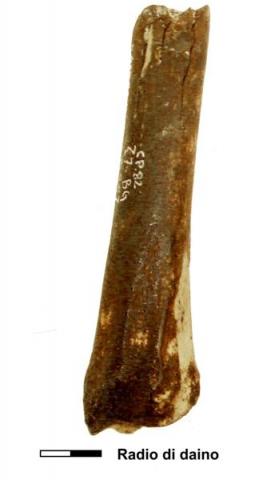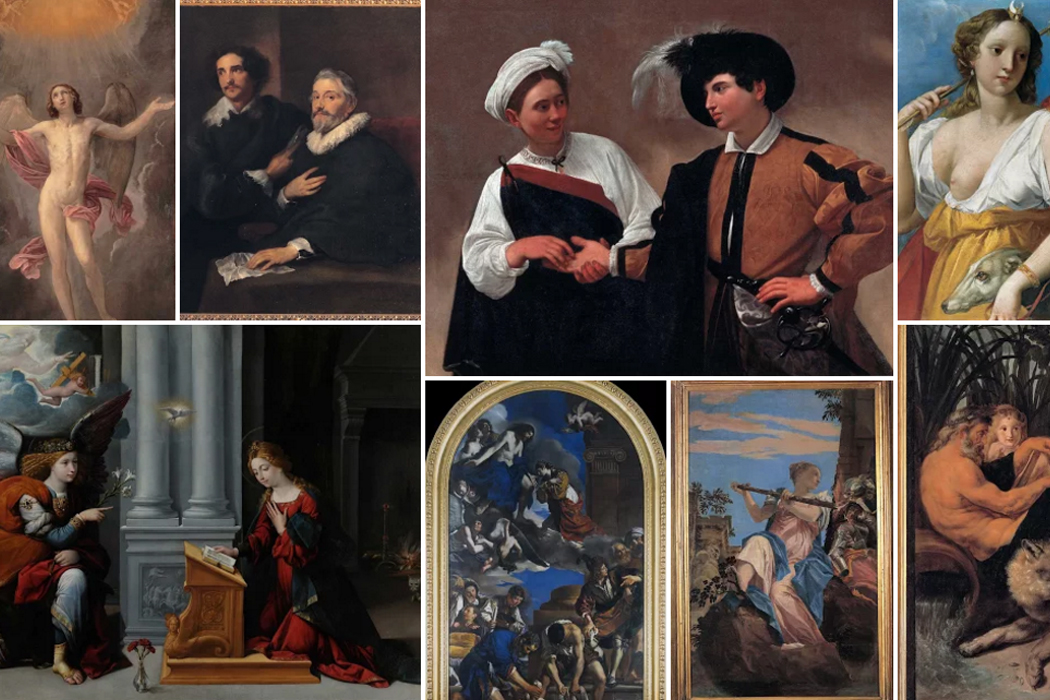Exhibition Hall
FAUNAL REMAINS
Inside the showcases located in the exhibition room, some of the more than 2000 fossil remains, found during excavation and representing the identified species, were placed.
FLORA
Fossil remains of Zelkova crenata, Tree of Judah and Laurel was discovered in the deposit. Fossil remains of Zelkova leaves are exposed.
LITHIC INDUSTRY (tools chipped by man)
In four showcases 22 lithic tools are exposed: a biface, six scrapers, two cores, two unretouched flakes, three multiple tools, three choppers, a point, an end scraper, a perforator, a denticulate on pebble, a notch. A bone tool is also shown.
Moreover the stone tools exposed in the museum are a representative selection of the over 1500 objects found during the excavation.
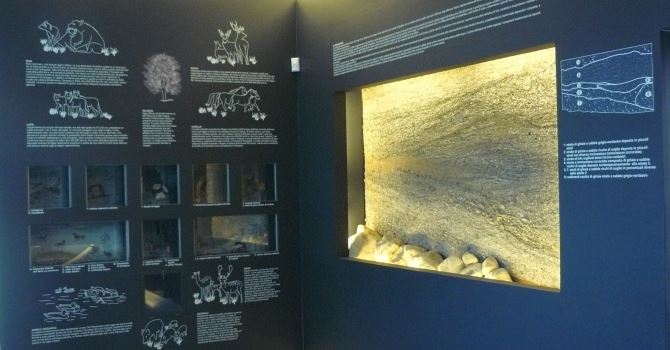
The denominations given over time to chipped stone tools have often been evoked by their alleged function or sometimes by their shape.
As a matter of fact, we don't evermore know precisely the real use they were intended.
The studies carried out suggest that they were used to cut the meat, clean the skins, and work the wood. Microwear analyzes on these ancient tools have confirmed these different uses, but often contradict the names adopted by archaeologists over time.
The most frequently highlighted actions are the decortication, planing, smoothing and shaping of wood and the cutting of the meat, the bones scrub and the scrapping of the animal skins .





























